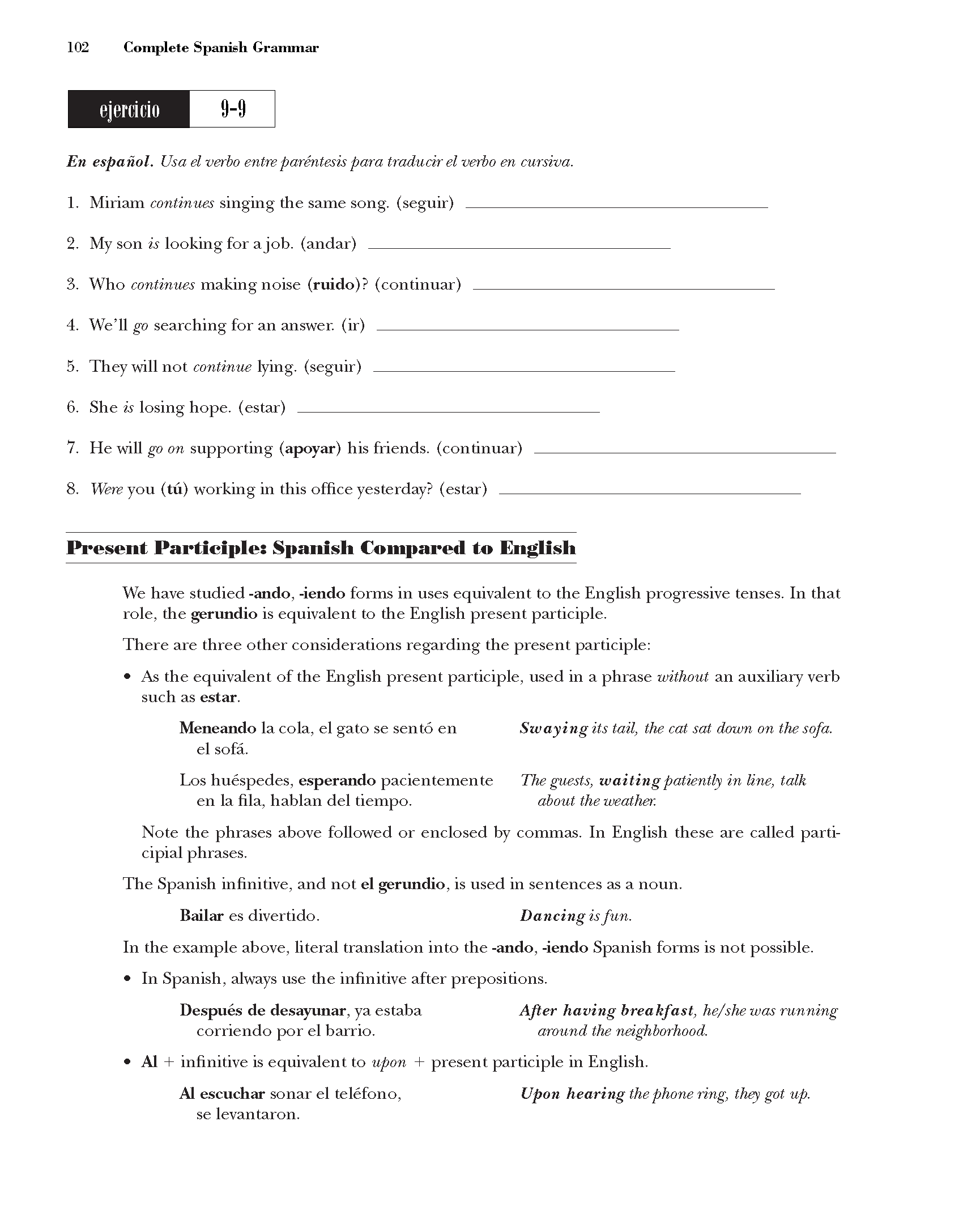CSG113

102 Complete Spanish Grammar
ejercicio
En espańol. Usa el verbo entreparentesis para traducirel verbo en cursiva.
1. Miriam continues singing the same song. (seguir) _
2. My son is looking for ajob. (andar) _
3. Who continues making noise (ruido)? (continuar) _
4. We’11 go searching for an answer. (ir) _
5. They will not continue lying. (seguir) _
6. She is losing hope. (estar) _
7. He will go on supporting (apoyar) his friends. (continuar) _
8. Were you (tu) working in this office yesterday? (estar) _
Present Participle: Spaiiisli Compared to English
We have studied -ando, -iendo forms in uses equivalent to the English progressive tenses. In that role, the gerundio is equivalent to the English present participle.
There are three other considerations regarding the present participle:
• As the equivalent of the English present participle, used in a phrase without an auxiliary verb such as estar.
Meneando la cola, el gato se sentó en Swaying its taił, the cat sat down on the sofa.
el sofa.
Los huespedes, esperando pacie n te men te The guests, waiting patiently in linę, talk
en la fila, hablan del tiempo. about the weather.
Notę the phrases above followed or enclosed by commas. In English these are called parti-cipial phrases.
The Spanish infrnitive, and not el gerundio, is used in sentences as a noun.
Railar es divertido. Dancing is fun.
In the example above, literał translation into the -ando, -iendo Spanish forms is not possible.
• In Spanish, always use the infinitive after prepositions.
Despues de desayunar, ya estaba After having hreakfast, he/she was running
corriendo por el barrio. around the neighborhood.
• Al + infinitive is equivalent to upon + present participle in English.
Al escuchar sonar el telefono, Upon hearing the phone ring, they got up.
se levantaron.
Wyszukiwarka
Podobne podstrony:
CSG291 280 Complete Spanish Grammarejercicio En espańol. Usa las expresiones que aparecen en la list
CSG297 286 Complete Spanish Grammarejercicio En espańol. Usa la preposición para. Asyou do the exerc
CSG111 100 Complete Spanish Grammar ejercicio En espańol. Usa el verbo estar + el gerundio. 1.
CSG291 280 Complete Spanish Grammarejercicio En espańol. Usa las expresiones que aparecen en la list
CSG297 286 Complete Spanish Grammarejercicio En espańol. Usa la preposición para. Asyou do the exerc
CSG075 64 Complete Spanish Grammarejercicio En espańol. Escribe en espanol la expresión entreparente
CSG117 106 Complete Spanish Grammarejercicio En espańol. En la consulta del doctor. 1. &
więcej podobnych podstron